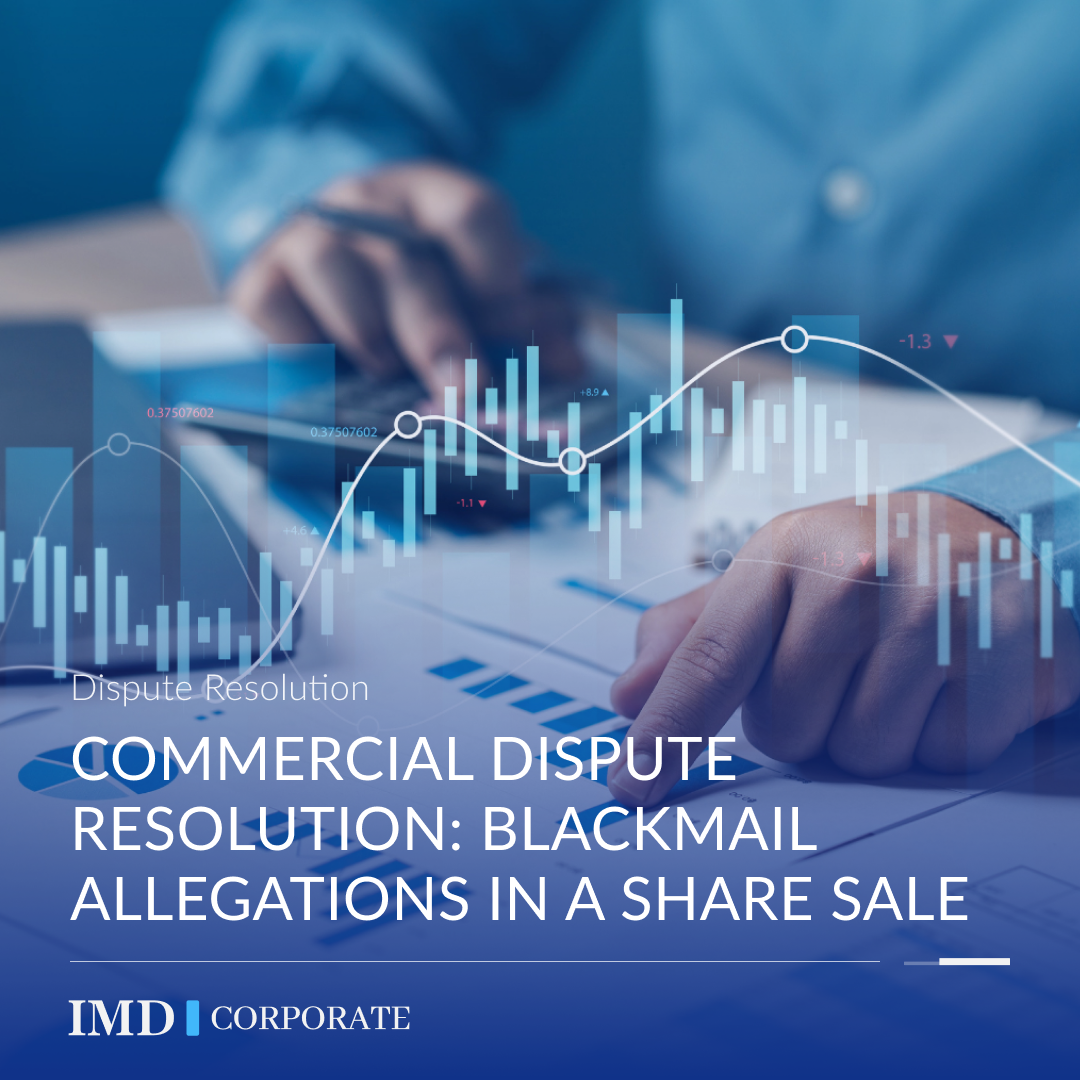Commercial Dispute Resolution: Blackmail Allegations in a Share Sale

Get in touch with our resolution solicitors in the UK and call us on 0330 107 0106 to arrange a free no-obligation call or request a free quote.
When a shareholder decides to sell their interest in a company, the expectation is a fair valuation, transparent negotiations, and a clean break. But what happens when threats are used to force a lower sale price? At IMD Corporate, we acted in a dispute arising from the sale of two UK-based retail companies. What first appeared to be a straightforward share sale later developed into a case of economic duress, intimidation, and unjust enrichment. The matter soon escalated into a serious commercial dispute with significant legal and financial consequences for everyone involved.
The Background: From Business Partnership to Forced Exit
Our client co-founded and successfully developed a chain of retail shops in the United Kingdom. Over time, his business partner sought to purchase his shareholding and take sole control of the companies. The transaction was completed in line with standard procedures.
Shortly after completion, however, our client disclosed that the sale had not been entered into freely. He revealed that during the course of price negotiations, his partner had threatened to release personal information and photographs unless he agreed to accept a reduced sale price. Faced with reputational and personal risks, our client agreed to sell his shares for a figure well below the fair market value. Importantly, our client had recorded a meeting in which the threats were made, providing a critical piece of evidence in support of the claim.
Legal Issues in Focus
The matter raised several key issues in commercial dispute resolution:
- Economic duress and undue influence: English contract law allows a party to challenge a contract entered into under illegitimate pressure. Here, threats to disclose damaging personal material created a strong basis to argue that the sale was not a product of free will but of coercion.
- Misrepresentation and denial: The buyer denied making any threats, both in pre-action correspondence and in pleadings. This created the risk of misleading the court, particularly when weighed against the existence of a recorded meeting.
- Business valuation disputes: Independent assessments suggested that the companies’ true value lay in the region of £300,000 to £400,000, significantly higher than the agreed £225,000. This discrepancy highlighted the financial harm caused by the threats.
- Procedural tactics: Beyond the legal principles, the dispute showed how litigation strategy — including careful drafting of pleadings, the use of Part 18 Requests for Further Information, and mindful disclosure of evidence — can shape the outcome of a case.
Litigation Strategy: Building Pressure Through Procedure
Our initial step was to issue a Pre-Action Protocol letter setting out the claim. The other side denied all allegations. It became clear that litigation would be necessary.
In the Particulars of Claim, we pleaded that the defendant had made threats amounting to economic duress and that the companies had been sold at a substantial undervalue. The defence maintained a complete denial, which later proved unsustainable once disclosure approached.
This presented a strategic opportunity. We issued detailed Part 18 Requests, requiring the defendant to provide formal clarification of their position. Their repeated denials further entrenched their case in contradiction. Knowing we held the recording of the meeting at which the threats were made; we anticipated that disclosure would expose the inconsistencies and weaken their credibility.
The aim was clear: to create a procedural framework where the opposing party committed themselves to a false narrative, leaving little room to retreat once disclosure revealed the key piece of evidence and the truth.
Resolution and Settlement
As the disclosure stage approached, pressure mounted on the defendant. Faced with undeniable evidence, they entered settlement negotiations. The matter concluded with our client receiving:
- £155,000 in additional compensation, bringing the total closer to the true market value; and
- £60,000 towards legal costs.
The settlement represented a substantial recovery, reflecting both the financial loss caused by the coerced sale and the litigation expenses incurred. Importantly, it achieved a resolution without the uncertainties and stress of a trial.
Insights for Business Owners and Shareholders
Several practical insights arise from this dispute:
- Contracts signed under duress can be challenged. Agreements entered into because of threats, intimidation, or undue pressure are not immune from scrutiny. The law provides remedies even after completion.
- Evidence is the strongest asset. In this case, the recording of threats was decisive. Without it, the dispute could have become a contest of credibility. Business owners should keep detailed records of negotiations.
- Strategic litigation can create leverage. Using procedural tools such as Part 18 Requests allowed us to secure denials that later collapsed under the weight of evidence. This tactic was instrumental in forcing settlement.
- Settlement often brings the most effective resolution. While settlement often provides the most effective resolution with no need to issue, in this case court proceedings were essential to secure the best outcome by exposing the defendant’s false narrative under oath.
Conclusion
This dispute shows how a standard business sale can transform into a complex legal battle when coercion and blackmail enter the negotiation process. At IMD Corporate, our combination of legal expertise, evidence-led strategy, and tactical litigation management enabled our client to secure a favourable outcome.
For business owners, the message is clear: if you are pressured into an agreement under threats or intimidation, you are not without recourse. With the right legal support, unfair deals can be challenged, and justice can be achieved.
This article is for general information only and does not constitute legal or professional advice. Please note that the law may have changed since this article was published.


















